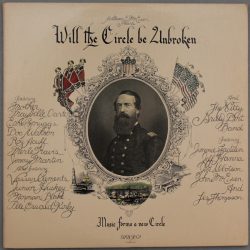
There are some that might question whether Vassar Clements can truly be described as “Unsung” when he has played on over 200 recordings, some forty of which are in his own name or as a featured guest with other artists; but this is the man who, almost single-handedly, defined the role of the fiddle in American roots music and his contribution to Americana music, as we know it, is impossible to exaggerate. There have been other fiddle players in country and bluegrass but none have done as much to establish the importance of the instrument or to show how versatile it can be within a recording. Yet, there are many fans of Americana who have never heard his name!
Born in Kinard, Florida in 1928, Clements taught himself to play the fiddle at the age of seven! Apparently, he picked up guitar and fiddle at much the same time; guitar he found easy but it was the difficult nature of the violin that made him persevere and master it. In addition to guitar and fiddle, Clements would go on to master viola, cello, double bass, mandolin, and tenor banjo but it was always his fiddle playing that stood out. Almost as soon as he’d taught himself to play he formed a string trio with his close cousins, Red and Gerald, and began playing local gigs. At the age of fourteen, he met Chubby Wise, Bill Monroe’s fiddle player at the time and a friend of Clement’s stepfather. He was greatly impressed by Wise and by the music of Monroe’s Blue Grass Boys and they became a major influence. So much so that, at the age of just twenty-one, he would audition to replace Chubby Wise when he left the band and would go on to spend the next seven years with the band. He can be heard on their various recordings from 1950 and 1951, such as ‘Uncle Pen‘ and ‘Kentucky Waltz‘ (Bill and the band would not record an album until 1958).
Clements left The Blue Grass Boys in 1956 and it would be fair to say that his career meandered somewhat over the next fifteen years or so. He spent five years working with Jim & Jesse and The Virginia Boys, a popular Bluegrass outfit, and he would start working as a session musician, including recording alongside Lester Flatt and Earl Scruggs on the acclaimed theme music for The Beverly Hillbillies series. In fact, his ability to blend genres and operate across country and popular music styles made him increasingly in demand. Unfortunately, increased success brought increased drinking and by the mid-sixties he had an alcohol problem, ended up dropping out of the music business, and took a series of blue-collar jobs, working as a plumber and insurance salesman, among other things.
In 1967, sober and keen to return to playing music for a living, Clements moved to Nashville and quickly became a much sought-after session musician, working in various local clubs and on a variety of small recordings. He also toured with Faron Young and was a member of John Hartford’s Dobrolic Plectral Society, before re-uniting with Earl Scruggs in the Earl Scruggs Revue. He was back to being a successful musician, though he was still mainly moving in Bluegrass circles, with the occasional foray into country music. All that changed in 1972 when he was asked to work on one of the most significant albums in the history of modern Americana.
 Vassar Clements was asked to join the recording sessions for The Nitty Gritty Dirt Band’s great Americana recording project, ‘Will The Circle Be Unbroken’. This landmark album, produced by the band and William McEuan, featured a plethora of significant country, bluegrass, and folk musicians on a selection of traditional American songs and would mark a significant turning point in Clements career. Following his outstanding work on this album, he was inundated with work offers and, within a few short months of the album’s release, would find himself recording and/or performing with Dicky Betts, Jerry Garcia, The Grateful Dead, The Allman Brothers, Linda Ronstadt, Paul McCartney and many more. This led directly to the making of the classic ‘Old & In The Way‘ album, recorded in San Francisco, during a live performance, in 1973. The band, with the same name as the album, would be billed as a Bluegrass Supergroup and featured Vassar on violin along with Jerry Garcia (banjo & vocals), Dave Grisman (mandolin & vocals), Peter Rowan (guitar & Vocals), and John Khan (string bass). The album is recognised as one of the most successful Bluegrass recordings of all time. It was around this time that he would also sign his own recording deal and go on to make twenty-seven albums under his own name; albums ranging from country, waltzes, swing & jazz – but only one bluegrass album as a solo performer, 1992’s ‘Grass Routes’.
Vassar Clements was asked to join the recording sessions for The Nitty Gritty Dirt Band’s great Americana recording project, ‘Will The Circle Be Unbroken’. This landmark album, produced by the band and William McEuan, featured a plethora of significant country, bluegrass, and folk musicians on a selection of traditional American songs and would mark a significant turning point in Clements career. Following his outstanding work on this album, he was inundated with work offers and, within a few short months of the album’s release, would find himself recording and/or performing with Dicky Betts, Jerry Garcia, The Grateful Dead, The Allman Brothers, Linda Ronstadt, Paul McCartney and many more. This led directly to the making of the classic ‘Old & In The Way‘ album, recorded in San Francisco, during a live performance, in 1973. The band, with the same name as the album, would be billed as a Bluegrass Supergroup and featured Vassar on violin along with Jerry Garcia (banjo & vocals), Dave Grisman (mandolin & vocals), Peter Rowan (guitar & Vocals), and John Khan (string bass). The album is recognised as one of the most successful Bluegrass recordings of all time. It was around this time that he would also sign his own recording deal and go on to make twenty-seven albums under his own name; albums ranging from country, waltzes, swing & jazz – but only one bluegrass album as a solo performer, 1992’s ‘Grass Routes’.
Vassar Clements’ musical career spanned fifty years, during which time he would play with artists ranging from Woody Herman to the Monkees. He would appear in notable films, such as Robert Altman’s ‘Nashville’ and Alan Rudolph’s ‘Welcome to L.A’ and he would return to the Nitty Gritty Dirt Band fold to appear on ‘Will the Circle Be Unbroken Vol. 2’ in 1989 and, again, on the third volume in 2002. He would earn no less than five Grammy Nominations, the last of which was in 2005, when he shared the Grammy Award for Best Country Instrumental Performance on ‘Earl’s Breakdown’ by the Nitty Gritty Dirt Band, and featuring Earl Scruggs, Randy Scruggs, Jerry Douglas and, of course, Vassar Clements.
Clements always acknowledged the influence of the great Swing Big Bands on his music and the importance of musicians and arrangers such as Glenn Miller and Tommy Dorsey, among others. Jazz was an important music form for him and you can hear its influence in much of his own work – he often referred to his own music as “Hillbilly Jazz” and, perhaps, one of his most significant recordings is his duet album with Stéphane Grappelli ‘Together at Last’, recorded in 1987.
His last album, ‘Livin’ With the Blues’, released in 2004, was his only ever blues recording and featured guest appearances by Elvin Bishop, Norton Buffalo, Maria Muldaur, and others. In 2005 Clements gave his last live performance and died just over two years later, from lung cancer, at the age of 77. Seventy years spent playing the fiddle on Bluegrass, country, folk, rock, and jazz music and all combinations thereof – a true Unsung Hero of Americana.



Another great article in the series and shows what a musical melting pot the late ‘60s and ‘70s were before the music industry caught up and brought more defined marketing to its product. We often forget that musicians are musicians first and not limited by their defined genre and Vassar’s love of jazz is a case in point. If he came alone today I’m not sure he would be afforded the freedom he enjoyed in his career.
Thanks Martin. You’re right about the 60s &70s being a melting pot and affording musicians the opportunity to move easily between genres but, at the same time, it was a period where the audiences themselves were quite fixed in their attitudes and their identification of the music that appealed to them. I actually think some of Vassar’s solo work might’ve found more of an audience today when audiences don’t seem so restricted in their perceptions of what music to buy.
Unfortunately we will never know. I have always been fascinated by those musicians who grew up in one genre but were then, largely through circumstantial opportunity, were able to play and develop in another. The members of Mile Davis’s second Quintet who transitioned to electric instruments are another case in point. Having an informed dual view made some musicians outlook unique to an extent.
Hard to think about Vassar without hearing Orange Blossom Special. Here’s a version with many of the players he inspired, including the great Stuart Duncan. https://www.youtube.com/watch?v=9f_QySKfsgI
Arguably the ‘Dobrolic Plectral Society’ (aka The Aereo Plain Band) was the first Bluegrass Supergroup, given the influence its members had on people like Sam Bush, Jerry Douglas, Clarence White, Tony Rice and a whole host of fiddlers.
Thanks for the article.
Great article about a great player! Watching his playing (thank you, YouTube) is awe-inspiring. It makes sense now – self-taught at age 7! No wonder the fiddle seems like an extension of his body when he plays!